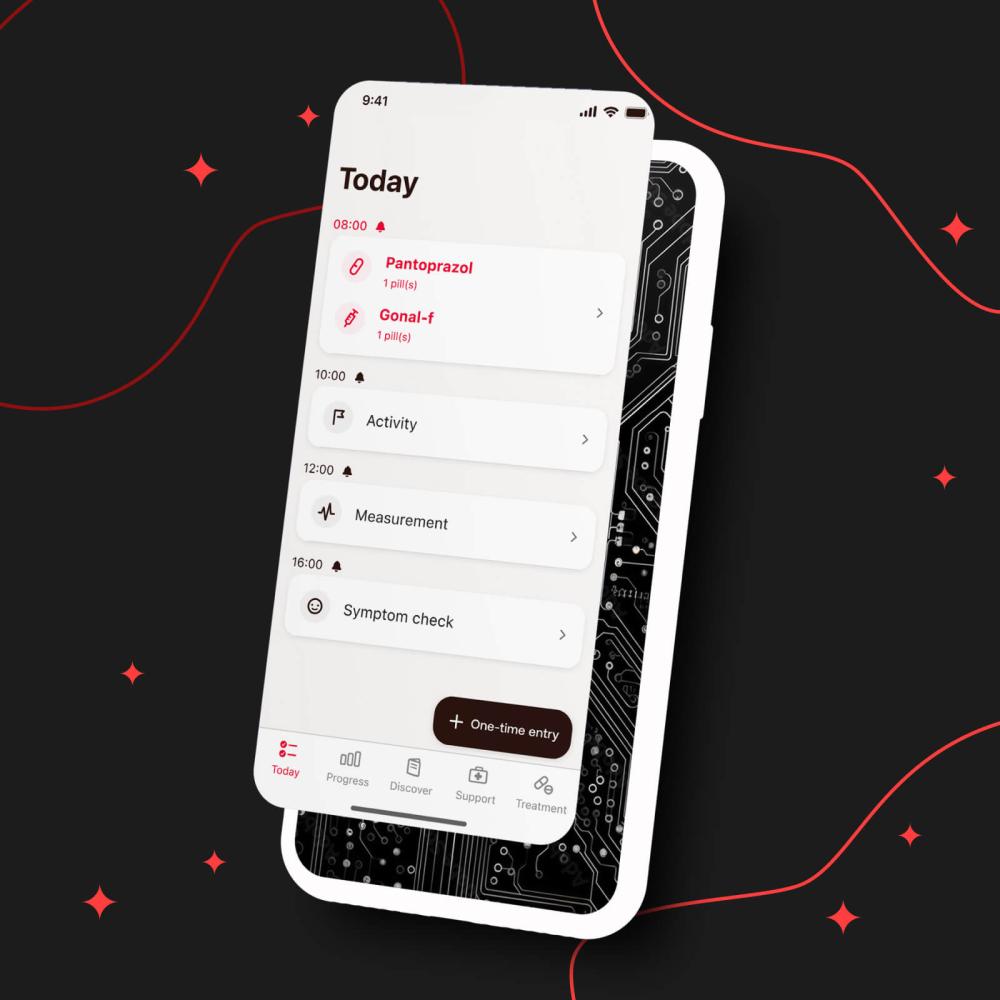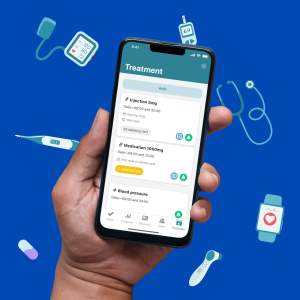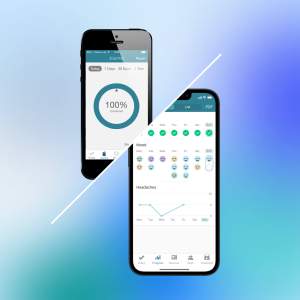Utilizing AI From Start to Finish: How Artificial Intelligence is Used Throughout the Development of MyTherapy
AI tools are revolutionizing many industries; read how we implement cutting-edge tools throughout the development of MyTherapy, from code generation to enhancing the UI and UX design

- AI-powered tools have become necessities in many industries and play a vital role throughout app development
- Throughout the development of MyTherapy, AI tools are utilized in areas such as code generation, automated testing, personalized content, and UI/UX design
- The use of AI helps increase efficiency and allows the teams to focus on higher-level tasks that require human creativity and judgement
Artificial Intelligence (AI) is everywhere you look, with AI-powered tools ranging from the gimmicky to the extraordinarily powerful. App development is an industry that utilizes tools at the latter end of that scale, with an increasing number of AI services appearing that can improve processes, efficiency, and quality throughout the development cycle. Read how our teams are utilizing AI throughout the development of MyTherapy, from writing code to improving the UI/UX design
How AI is Used Throughout the Development Process
1. Code Generation and Autocompletion
Code generation is an area where AI tools are proving extremely valuable. GitHub Copilot, for example, acts as an assistant by offering real-time code suggestions and autocompletion. This results in significant efficiency gains when it comes to writing boilerplate code and reducing the need for developers to type out repetitive patterns.
The use of Copilot in the development of MyTherapy not only speeds up the coding process but also reduces errors. By offering suggestions, it helps ensure that the code follows standard conventions and includes necessary components, which might be missed in manual coding. This is particularly important in healthcare apps, where precision and reliability are paramount.
By handling routine code, the use of this AI tool allows developers to concentrate more on complex logic, algorithms, and the creative aspects of software design.
2. Automated Testing and Debugging
Testing and debugging are two key steps along the development path and two that can be made more efficient thanks to AI.
Automated testing, as the name suggests, executes automatically to check the app for errors and ensures that everything runs smoothly; the benefit of AI integration is the ability for the software to learn from each test and adapt to find issues more effectively. The ability of AI tools to analyze the vast source code and devise tests accordingly helps improve efficiency and test coverage.
Furthermore, AI tools used for debugging analyze large volumes of data to pinpoint the root causes of issues faster than a human can. It can recognize patterns and anomalies in the app’s behavior, providing insights into what went wrong and how to fix it. This reduces the time developers spend on troubleshooting and helps ensure that the app is reliable and bug-free.
3. Personalized Patient Journey & Content
One of the key benefits of the MyTherapy platform and the partner programs we run upon it is the ability to tailor content to the needs of target patient populations.
AI tools analyze user behavior and preferences to understand what resonates with patients and can offer recommendations that lead to a more personalized user experience. Such content might be pushed at specific times along the patient journey (e.g. onboarding or at the end of the titration period) based on broadly applicable patterns or pushed in response to specific user behavior (e.g. skipping multiple medication intakes).
AI tools such as ChatGPT can further contribute to content development by providing suggestions for headlines, article copy, and teaser texts. This can provide a foundation for the content team to build on, helping ensure content is accurate and of a high quality.
The result is a more efficient content creation process and a greater level of personalization, which helps ensure high levels of engagement.
4. UI/UX Design Assistance
AI-powered tools similarly support UI/UX design for patient support apps by enhancing personalization, efficiency, and accessibility. Predictive analytics allow designers to tailor interfaces based on user behavior and preferences, creating more intuitive and engaging experiences.
Machine learning automates routine tasks like generating design elements and layouts, speeding up the process and ensuring consistency. AI-driven prototyping tools enable rapid iteration and testing, allowing for data-driven adjustments that refine the final design.
Additionally, AI helps ensure accessibility by analyzing and suggesting improvements to meet standards. These advancements result in patient support apps that are user-friendly, inclusive, and tailored to diverse patient needs, ultimately enhancing patient engagement and satisfaction.
Learn More About the MyTherapy Platform
Incorporating AI-powered tools into the app development process streamlines routine and repetitive tasks such as code generation, testing, user interaction, personalization, and design. This allows developers to focus more on creative problem-solving, strategic planning, and enhancing the overall user experience—areas where human expertise and creativity are indispensable.
If you want to learn more about how this results in a high-quality platform for pharma’s digital patient services, click here to book a call.





